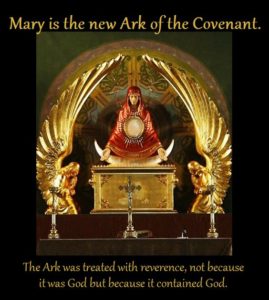 The Lord be with you
The Lord be with you
The most recent issue of Concordia Theological Quarterly (a journal I get) was uniformly good (that is, I was interested in all the articles). Arthur Just, one of the professors I had back when we were both younger, wrote an excellent article on “Luther’s Hermeneutic of Humility.” “Hermeneutic” is a fancy word that basically means “how you interpret something – like the Bible, a poem, the newspaper, etc. The rules you use.” So, for example, we instinctively use different “rules” when we read poetry than the “rules” we use when we read the front page of the paper or the comics page. We may not have them written down, but we still use them. The quote below is from that article. I’ve transliterated y the Greek. One comment in brackets is from me.
John McHugh notes an interesting series of parallels between Mary’s journey to the hill country of Judah and the movement of the ark of the covenant to the same locale on its way to Jerusalem. In these parallels, Luke is showing that Mary, as a temporary and portable vessel housing the immanent presence of the true God, fulfills the purpose of the ark of the covenant:
The two stories open with the statement that David and Mary “arose and made a journey” (2 Sam 6:2; Lk 1:39) up into the hill country, into the land of Judah. On arrival, both the Ark and Mary are greeted with “shouts” of joy (2 Sam 6:12, 15; Lk 1:42, 44). The verb used for Elizabeth’s greeting in Lk 1:42 (anephōnāsen) is, in the Septuagint [BC translation of the Old Testament], used only in connection with liturgical ceremonies centered round the Ark; it is best translated as “intoned.” The Ark, on its way to Jerusalem, was taken into the house of Obededom, and became a source of blessing for his house (2 Sam 6:10-12), Mary’s entry into the house of Elizabeth is also seen as a source of blessing for the house (Lk 1:41, 43-4). David, in terror at the untouchable holiness of the Ark, cried out: “How shall that Ark of the Lord come to me! (2 Sam6:9); Elizabeth, in awe before the mother of her Lord, says, “Why should this happen to me, that the mother of my Lord should come to me! (Lk 1:43).Finally, we read that “the Ark of the Lord remained in the house of Obededom three months” (2 Samuel 6:11), and that Mary stayed with Elizabeth “about three months” (Lk 1:56).
The Magnificat is Mary’s response to this extraordinary reality she now knows about herself because of the child in her womb; she is Israel, temple, and ark.
Arthur A. Just Jr. “My Soul Magnifies the Lord: Luther’s Hermeneutic of Humility” Concordia Theological Quarterly, volume 81, Number 1-2, January/April 2017 48-49
Blessings in Christ,
Pastor
